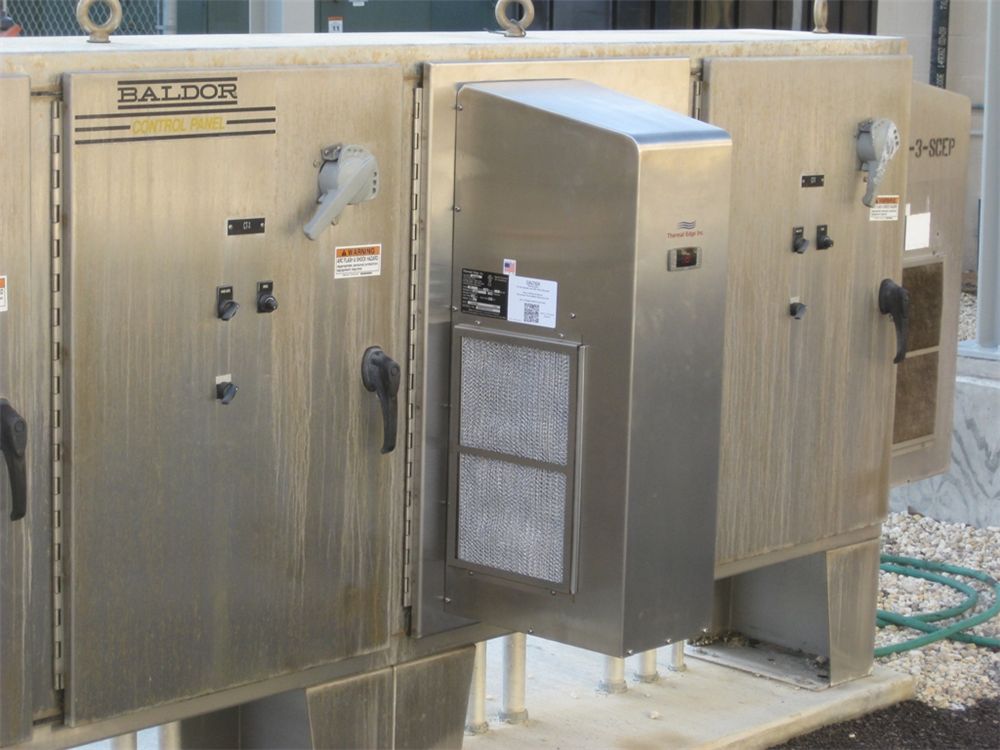Why High Power Components Require an Enclosure Air Conditioner

High power components can be divided into two groups, those that are electro-mechanical and those that are electronic. These devices are expected to handle a significant amount of power and generate a lot of heat. Typical applications where components generate high temperatures include motion control and downhole drilling. The heat generation of electronic components is well understood but it is easy to overlook the fact that electro-mechanical devices also generate substantial amounts of heat, especially as they get older.
This heat must be removed from the electrical enclosure to prevent overheating and malfunction of equipment. A particular issue with high power components is the risk of thermal runaway leading to a flashover and destruction of the electrical enclosure. An enclosure air conditioner is the most effective way of cooling high power components in most applications.
High Power Components
High power components handle significant current. For practical purposes, high power applications could be considered those that handle three phase AC current above 150 amps or DC currents above 250 amps. The rationale for this is based on the heating effect of current and the potential for fire and explosion should there be a serious fault. An important consideration is the fault level of the power supply as this exacerbates the maximum current under fault conditions. Examples of such equipment include:
- Electro-mechanical devices: Circuit breakers, load break switches, and contactors.
- Electronic equipment: Large variable speed drives, thyristor drives, and AC/DC convertors.
Typical Heat Load
Heat load in a panel controlling high power equipment is summated by calculating the power loss in watts of each item of equipment:
- Programmable Controller (PLC): A PLC drawing at 100 watts with an efficiency of 95% will have heat waste that is 5 watts.
- Integrated Circuits(IC): Total IC power to be dissipated depends on input current, output current, voltage drop, and duty cycle.
- Circuit breaker and contactors: A circuit breaker conducting 630 amps will generate over 54 watts of waste heat.
- Variable frequency drives: Although a quality variable frequency drive may have an efficiency of 98 percent, if it consumes 100 kW, it will generate 2 kW of waste heat.
- The cumulative heat load of high power components is significant.
Viable Enclosure Cooling Methods
The heat generated in electrical enclosures containing high power equipment needs to be removed to ensure equipment remains at acceptable temperatures. The enclosure air temperature should ideally not exceed 95 ºF (35 ºC) to ensure reliable operation and long life. This generally precludes the use of natural ventilation or fans unless the enclosure is large and in a cool location. If environmental conditions are not too severe, it may be possible to use an air-to-air heat exchanger, but in most instances an enclosure air conditioner is required to provide sufficient cooling capacity and ensure a safe temperature in the enclosure.
Harsh Environments
In harsh environments, such as those with high levels of dust, chemical vapors or where enclosures are situated in hot, damp locations it is imperative that enclosure air conditioning is used in conjunction with a NEMA 4X enclosure that will protect sensitive electrical equipment from contamination while ensuring adequate cooling.
Benefits of Enclosure Air Conditioning
The use of an enclosure air conditioner for high power components ensures equipment is maintained at a temperature that is well within its rated capabilities. This ensures long electrical component life, avoids the possibility of malfunction due to overheating, and reduces the risk of thermal runaway. As an added safeguard, optional remote temperature monitoring can provide early warning of malfunction or impending equipment failure. Contact us at Thermal Edge and let us advise on the best solution for keeping your high power equipment cool.


